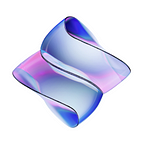Any source can deploy a programmed feed on top of SEDA to query any blockchain or user account state.
There are an estimated 8892 active crypto tokens across over 1000 blockchains. New protocols and blockchains generally require new accounts, wallets, or gas tokens for user interaction. As Web3 continues its march toward an app-chain future, the number of blockchains, accounts, wallets, and required tokens will grow exponentially. User value and industry liquidity are extremely fragmented. Users must consolidate their value split across multiple chains into one account to use their ‘whole’ account value, losing value to bridge transfers and gas fees. Chain and account abstraction are leading solutions for unifying a fragmented Web3. SEDA’s Modular Data Layer is positioned within the chain abstraction stack to allow the complex querying of any chain’s state to support aggregation of user value and fractured liquidity.
The Current Reality Of An Ever Expanding Web3
Web3 has entered an infrastructure expansion phase with rollups-as-a-service and deployment toolkits allowing for rapid deployment of hyper-specialized blockchains, ushering in an app-chain future. New chains can be spun up, and modular stacks can be leveraged to build for any use case. While this is great for innovation and ‘development flexibility,’ it only adds to an already confusing, complex, and fractured Web3 UX.
To interact with new chains and protocols, users must generally open new accounts and wallets, hold new gas tokens, and split their cryptocurrencies across multiple ecosystems, fragmenting user account value. Imagine having 100 USDC on Chain A, 100 USDC on Chain B & another 100 USDC on Chain C. In essence, you have a complete user value of 300 USDC. However, as each 100 USDC isn’t aggregated across all of one user’s wallets, the combined value of 300 USDC is unusable in one transaction. Analogy by Orb Labs
Chain & Account Abstraction Unifying User Value
Account abstraction uses one account or wallet to interact with any protocol or chain. Chain abstraction refers to the user interacting in Web3 without knowing what chain they interact on or with. Within account abstraction is the concept of ‘account aggregation,’ where an application could read the state of all user wallets and aggregate their multi-account value into one. In the above example, where the user had 300 USDC fragmented across three chains, account aggregation would allow holding value on multiple chains while utilizing the combined value on any chain.
Orb Labs proposed the idea of ‘Account-Unification Nodes’ (AU nodes) to query multiple account states across a range of chains. Protocols within the permission layer that verify the state of a user wallet could query these nodes to aggregate the ‘whole’ value of a user’s account across all of Web3. However, issuing a complex multi-chain account state query requires the ability to program a data request that could query account states on any chain and return the state within predefined parameters set by the data consumer.
SEDA’s Programmable Feeds Power Complex State Queries.
Developers building on SEDA can issue a complex data request query of any data type and deploy ‘programs’ that define how that data is presented upon retrieval. Protocols searching multiple user accounts via AU nodes across multiple chains can deploy a programmed feed on SEDA. Their data request would then collect the value of each user account on specified chains and return the aggregated value to the protocol.
SEDA’s data layer embodies three critical design features that enable any source to issue complex queries for any chain, wallet, or account state.
- 100% Permissionless: Anyone can build custom data feeds on SEDA.
- Chain-Agnostic: Any source can integrate for day-one querying of any data type.
- Programmable: Any feed can be customized however a builder requires.
SEDA can natively serve over 230+ blockchains by deploying one simple ‘SEDAproxy’ integration contract. The SEDA Network allows any protocol or chain to query any RPC or specialized node data and return the data to the source within the preset configuration parameters.
SEDA’s Data Layer Supports Tech Advances
The ultimate goal of SEDA is to be a modular data layer whose native design principles mentioned above organically support any emerging tech advance from an app-chain future to chain abstraction and beyond. By incorporating these three design principles, SEDA will continue to sit between off-chain data and any blockchain execution environment for decades. To keep up with the SEDA journey as we enter the mainnet feature rollout, plugin to the social channels below.
SEDA
